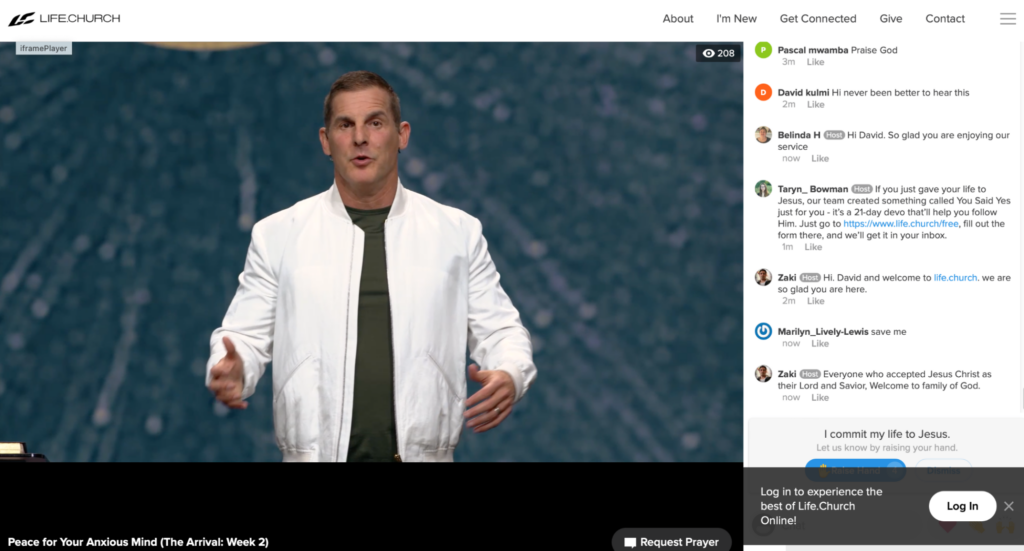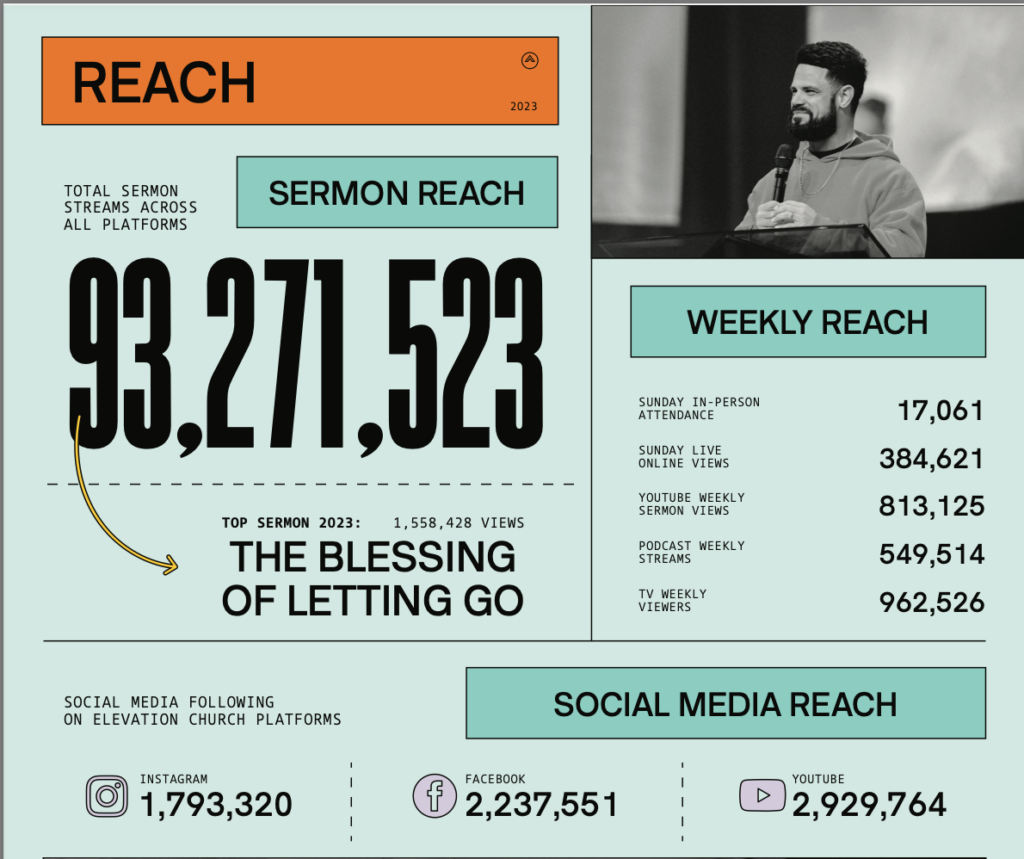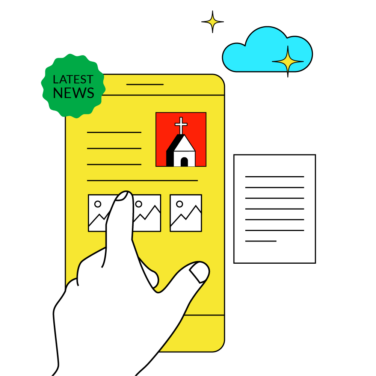Starting or growing an online ministry can feel overwhelming, can’t it? Whether you’re just dipping your toes into online outreach or trying to take your church’s digital presence to the next level, it’s easy to hit roadblocks:
- You’re not sure where to start or which platforms will work best.
- The technology feels intimidating, and you worry about the time it will take to learn.
- It feels like your online efforts aren’t connecting with people the way you hoped.
These challenges usually pop up because we’re trying to figure it out on our own or jumping in without a clear plan.
That’s why I’ve put together this list of practical action steps for launching and growing an online ministry (supported by industry-leading church website builders). Each step is simple, doable, and designed to help your church make a real impact online.
Let’s dive in and get your online ministry thriving!

Why Your Church Should Develop An Online Ministry
An online ministry allows your church to reach beyond your church building, connecting with people who may never step through your doors. It fosters three key things:
- Expanded Reach
- Accessibility and Convenience
- Enhanced Engagement Opportunities
Many individuals seeking spiritual guidance or community start their search online. A strong digital presence positions your church to meet them where they are.
Online ministry can engage homebound members, travelers, and those who are otherwise hesitant to step inside your church building.
Joshua gordon
Your church can extend its mission, foster relationships, and build a community that goes beyond Sunday mornings.
With the right approach, an online ministry becomes a bridge to deeper, in-person connections while meeting the spiritual needs of a digital world.
What You’ll Need To Start Your Online Ministry
Starting an online ministry doesn’t require an expensive setup—just a few basic tools to help you connect effectively and of course a vision for why you’re doing what you’re doing.
The Necessary Hardware
You don’t need a high-end setup to start an online ministry. A smartphone with a decent camera and microphone is a good place to start.
Starting small and simple is key. Focus on delivering meaningful content, and plan to upgrade equipment as your ministry grows.
Joshua Gordon
Smartphones can record high-quality video and audio, making them perfect for live-streaming or recording sermons. Pair that with a simple tripod (around $15–$30) to stabilize your camera and give your videos a professional look.
To enhance audio quality (which I recommend you do), an external microphone is a great choice. It can be purchased for $20–$50.
If you’re ready to invest more, entry-level cameras like the Logitech StreamCam (around $150) or a basic DSLR camera (starting at $400) can improve video quality significantly.
Helpful Software to Consider
Generally speaking, you need three types of software: video editing software, church presentation software, and church streaming software.
Free tools like iMovie (Mac) or Clipchamp (Windows) are easy to use for simple video editing. These let you trim, add titles, or polish your videos before sharing them online.
Next up, you’ll need good, reliable church presentation software (and there are some great free church presentation software options as well). Because free fits every budget, and it’s likely your first step before you invest the big bucks.
And lastly, you’ll need a video streaming service for your sermons. We compiled a list of some of the top church streaming services to help you get off to a smooth start and avoid common frustrations.
About the Time Commitment
Starting an online ministry typically requires a weekly time commitment of about 5–10 hours. This includes:
- 2–3 hours for planning and creating content (such as recording sermons)
- 1–2 hours for editing and polishing videos
- 1–2 hours for posting and managing social media updates
- 1–3 hours for interacting with your audience through comments, messages, or live sessions
As your ministry grows, these time requirements may be larger, but starting small ensures consistency without overwhelming your team.
Distribution Platforms to Consider
Choose one platform to start (i.e. Facebook Live, YouTube, Instagram, etc) based on where your audience is most active. These platforms are free and user-friendly, even for beginners.
And of course, don’t forget your church website. This is often your first impression, so do your best to make it good (by good, I’m referring to good website design and good functionality).
How To Start An Online Ministry For Your Church
There are six key steps to starting an online ministry, starting with your vision and ending with how you measure and improve your impact and performance. Let’s dive in.
Step 1: Define Your Mission and Audience
To start your online church ministry, it’s essential to clearly define your purpose and audience.
A clear mission ensures your efforts are focused and impactful, while identifying your audience helps tailor your content to their needs.
Are you aiming to engage young families, seekers exploring faith, or the homebound members of your congregation? Knowing this shapes not only the tone and style of your content but also the type of resources you’ll share.
Your goals—whether outreach, discipleship, or fostering community—will guide which platforms and content formats best serve your ministry’s vision.
Step 2: Choose the Right Platforms
Choosing the right platforms is key to reaching your audience effectively.
Popular options include:
- Facebook for community-building
- YouTube for hosting sermons and live streams
- Instagram for sharing visually engaging, quick updates.
- Google for SEO purposes for your church
Start with one or two platforms that align with your audience’s preferences and your church’s goals.
For instance, if you’re targeting young adults, Instagram or TikTok might be a good fit. If your focus is sermon archives and long-form video, YouTube is ideal. If you minister primarily to an older congregation, you may find that they tend to prefer to stay in touch through your email list.
Keep it simple! Choose platforms where your church members are already present.
joshua gordon
Step 3: Develop Meaningful Content
The heart of your online ministry lies in creating content that resonates with your audience and reflects your church’s mission. For instance, you can share:
- Recorded sermons
- Short devotionals
- Bible study videos
- church blogs addressing common spiritual questions
- Community updates
- Personal testimonies
- Prayer requests (great for fostering connection and engagement!)
TIP: Diversifying your content keeps things fresh and encourages your audience to stay connected. One way to kill engagement is using your online platform to share church announcements (boring!!).
To keep your content engaging, use real-life examples, speak directly to your audience, and keep your tone uplifting and hopeful.
Joshua Gordon
REMEMBER: videos under 10 minutes tend to perform well. Posts with clear, actionable takeaways tend to perform well. Behind-the-scenes content also tends to do well!
Step 4: Build a Consistent Schedule
Consistency builds trust and momentum in your online ministry. Setting up a simple content calendar will help you stay organized and avoid long gaps in posting.
Regular updates—whether it’s a weekly sermon upload or daily inspirational posts—keep your audience engaged and coming back for more.
A predictable schedule also helps your ministry grow, as people learn when to expect new content and begin sharing it with others! Word-of-mouth is always the most powerful and effective form of advertising.
Success Story: Life.Church (Edmund, Oklahoma)
Life.Church started in 1996, and today has a church community that meets in multiple cities in the US, and worldwide, both in person and online.
Life.Church recognized pretty early on the ability of digital platforms to reach a global audience (the idea of going into countries where we can’t travel to). One of their many contributions has been the creation of the Church Online Platform, which offers live streaming of church services, interactive chat features, and online small groups.
They’ve had a significant impact on how churches do church online:
- over 15 million followers across all social media platforms
- created the Bible App, which has over 400 million downloads
- developed the Church Online Platform that’s used by over 30,000 churches worldwide

Life.Church is huuuuuuge. I’m sharing their success story to inspire you to think, pray and plan bigger with your team and church leaders, not try to be like Life.Church (which would be a disservice to the mission and vision Christ has given to your church!)
Step 5: Foster Interaction and Build Community
Write 1-2 paragraphs on how to create a feeling of community online. Suggest ideas like virtual group chats, Q&A sessions, or live streams where people can participate. Explain how responding to comments or requests helps build a close community.
Building community online starts with creating opportunities for interaction.
It’s less about what you say, and more about creating moments for people to engage with one another.

Some ways of building community include hosting:
- Virtual group chats
- Friendly, casual church leader bios on your church about page.
- Bible studies
- Q&A sessions ( where people can ask questions and share their thoughts in real-time
- Live-streamed services
Live-streamed services or devotionals are especially effective when paired with interactive features. These serve as tools that give people a way to participate, instead of just watch. Go ahead and try out things like:
- Chat rooms (tip: it can be helpful to have a moderator online…)
- Polls (people love giving their opinions, so use this to your advantage)
- Prayer requests
Step 6: Measure and Improve
Tracking simple metrics like video views, likes, comments, and shares can provide valuable insights into what content truly resonates with your audience.
For instance, if devotionals receive more engagement than sermon clips, you may want to prioritize that format. (yes I know, you like your sermons — don’t we all?)
Regularly review these metrics to see what’s working and then adjust your strategy accordingly.
Feedback from analytics helps you refine your approach, ensuring your ministry grows and meets the needs of your audience more effectively over time. It also keeps you out of a rut of just doing ‘the same old, same old’.
Success Story: Elevation Church (Charlotte, North Carolina)
Founded in 2006, Elevation Church, led by Pastor Steven Furtick, is probably one of the top 10 most recognized churches in America. I share their success here to remind us how powerful leveraging our online tools can be - when done consistently, over the long haul.
For almost 3 decades, Elevation has utilized digital tools consistently, and as a result, they've grown into a multi-site church with a global online streaming ministry and a well-recognized worship ministry (Elevation Music). As a result of that long-term faithfulness, they've grown a huge impact:
- 1.8 million followers on Instagram
- over 93 million sermon streams
- more than 21 million podcast downloads

Final Thoughts
An online ministry offers some incredible opportunities to reach people beyond the walls of your church building. What a cool opportunity we have as modern-day followers of Jesus!
Remember these keys to creating an impactful online ministry:
- Start small, right where you are (use the tools you have
- Focus on one platform to start
- Make engaging, authentic content
- Prioritize creating interaction & engagement
With vision, consistency and a heart for connection, your online ministry can make a real difference in people’s lives.
Leveraging online tools effectively, faithfully, and prayerfully can help us reach more people with the hope of the Gospel, and see the Great Commission fulfilled in remarkable ways in our lifetime.
Joshua Gordon
“Go, therefore, and make disciples of all the nations, baptizing them in the name of the Father and the Son and the Holy Spirit, teaching them to follow all that I commanded you; and behold, I am with you always, to the end of the age.” Matthew 18:19-20
Subscribe to our Newsletter
When you subscribe to The Lead Pastor, you’ll get insightful, relevant, no-fluff information and strategies to help you and your ministry grow and thrive. That’s literally why we do what we do.


